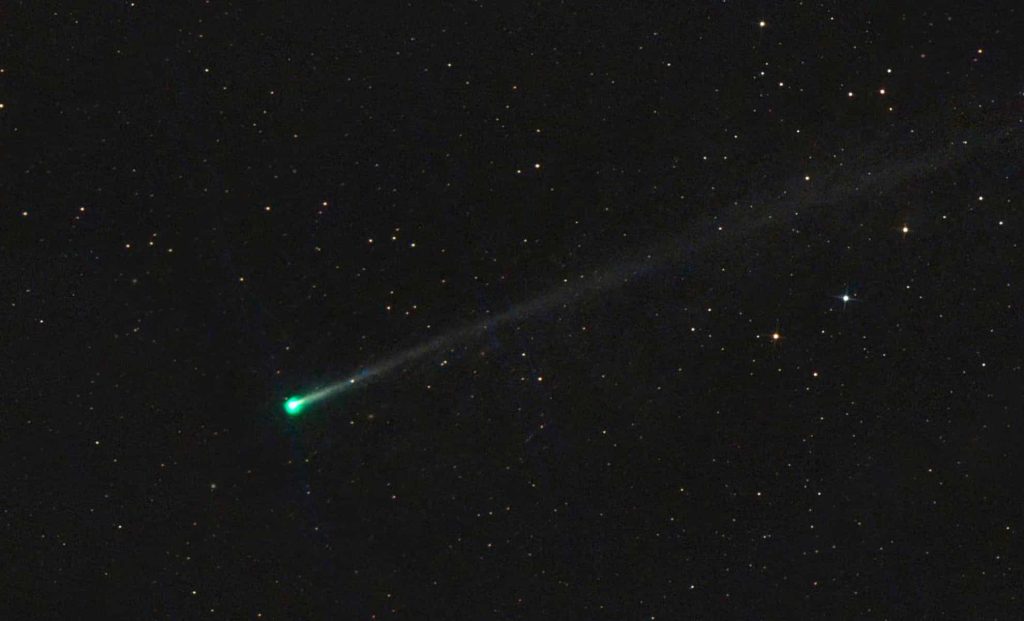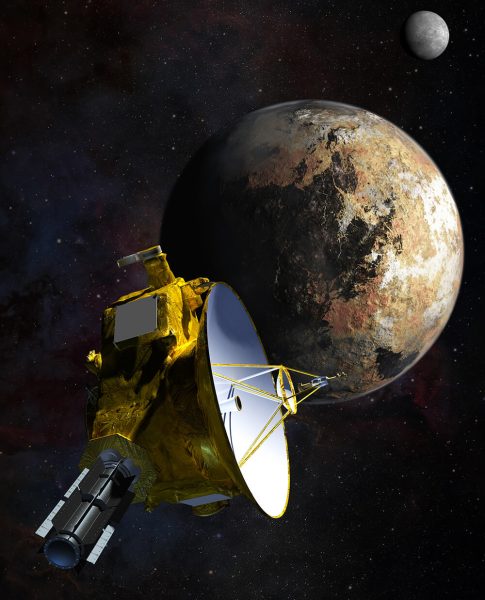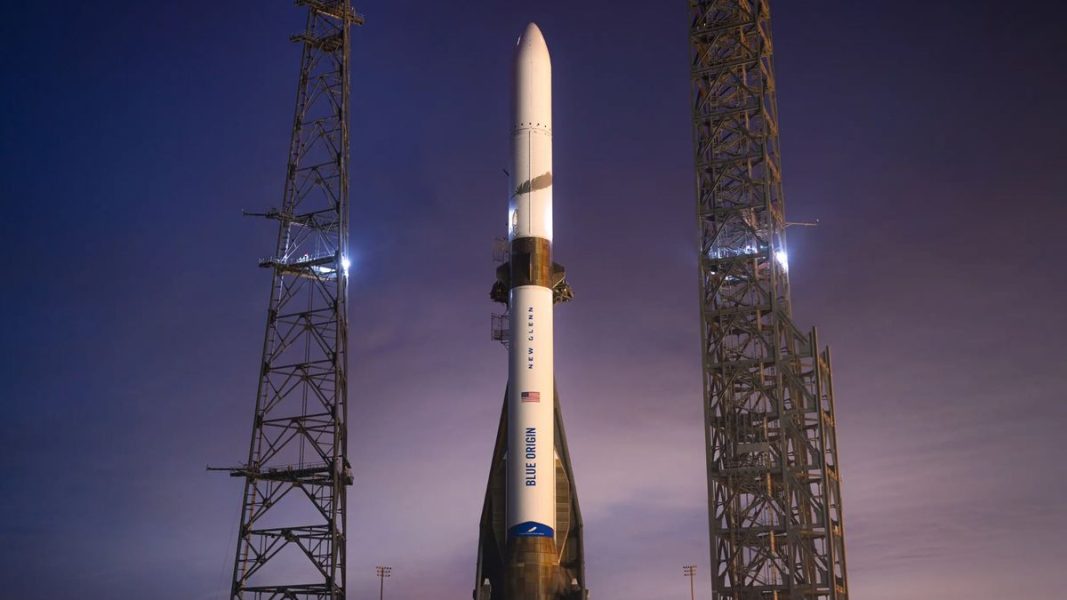A Comet Brighter Than Venus? Don’t Miss This Rare Celestial Event Next Week – The Daily Galaxy –Great Discoveries Channel

Astronomers are abuzz with excitement as a rare celestial visitor, Comet C/2024 G3 (ATLAS), hurtles toward the Sun. This dazzling “sun-grazer” is predicted to outshine Venus in brightness, promising a spectacular show in the night sky. But there’s a twist—its journey is fraught with peril, and not everyone will have the chance to witness its brilliance. What makes this comet so special, and will it survive its fiery encounter with the Sun? Here’s what you need to know.The skies are set to light up with a rare celestial spectacle as Comet C/2024 G3 (ATLAS) makes its dramatic approach toward the Sun. Known as a “sun-grazer” due to its perilously close orbit to our star, this comet is projected to reach a peak brightness of magnitude -6.1. If predictions hold true, it could outshine Venus, the second-brightest object in the night sky after the Moon, dazzling stargazers with its brilliance. Such an event is a once-in-a-generation opportunity, as comets of this brightness are exceedingly rare. However, its journey is fraught with challenges—its close proximity to the Sun will make observation difficult for many, and its survival is far from guaranteed. Despite these hurdles, Comet C/2024 G3 has already ignited excitement among astronomers and enthusiasts alike, who are eager to witness one of the most promising celestial events of 2025.Comet C/2024 G3 is a long-period comet with an orbit that takes approximately 135,000 years to complete. This means the last time it passed near the Sun, Earth was still in the midst of the Ice Age. Its trajectory brings it incredibly close to the Sun, making it a “sun-grazer”, a category of comets that are at high risk of disintegration due to intense solar radiation.Here’s a snapshot of the comet’s characteristics:Its path through space brings it much closer to the Sun than Earth, exposing it to extreme heat that vaporizes its icy core, creating a glowing coma and a spectacular tail.Comet C/2024 G3 (ATLAS) owes its predicted brightness to a combination of its proximity to the Sun and the volatile nature of its icy nucleus. As the comet approaches the Sun, solar radiation heats its surface, causing the ices to sublimate—transitioning directly from solid to gas. This process releases vast amounts of dust and gas, forming a glowing coma around the nucleus and a long, luminous tail stretching millions of kilometers into space. The reflective nature of these materials amplifies the comet’s visibility, making it one of the brightest celestial objects of recent years.However, comets are notoriously unpredictable. The same proximity to the Sun that makes C/2024 G3 so brilliant also puts it at great risk of disintegration. Intense solar radiation and gravitational forces could cause the comet to break apart, significantly dimming its display. While C/2024 G3 has exceeded brightness expectations so far, its ultimate fate remains uncertain—a fact that adds to the anticipation and intrigue surrounding its appearance.Despite its extraordinary brightness, observing Comet C/2024 G3 will be far from straightforward. Its position in the sky during its peak brightness—on January 13, 2025—places it extremely close to the Sun from Earth’s perspective. This proximity makes direct observation almost impossible without specialized equipment, as the glare of the Sun will overpower the comet’s glow.For those determined to witness this rare celestial event, timing and location will be crucial:Even with these preparations, environmental factors such as skyglow, weather conditions, and light pollution could pose additional challenges. Observers are encouraged to find dark-sky locations away from urban areas to maximize their chances of spotting the comet.Comet C/2024 G3 is already drawing comparisons to recent comets like C/2023 A3 (Tsuchinshan-ATLAS), which also generated excitement but ultimately fell short of expectations. While both comets share similarities in their trajectories and initial projections, several factors set C/2024 G3 apart:These distinctions highlight the unique nature of C/2024 G3, raising hopes that it could deliver a more memorable display than other recent comets.Sun-grazing comets like C/2024 G3 face extraordinary challenges as they approach the Sun. The intense heat and gravitational forces they encounter can cause their icy nuclei to fragment or completely disintegrate. Despite these dangers, C/2024 G3 has demonstrated remarkable resilience, surviving its previous passage through the inner solar system roughly 135,000 years ago. This history suggests that the comet’s core may be unusually robust, increasing the likelihood that it will endure its current close encounter with the Sun.If the comet survives its solar passage, it will offer a stunning display of cosmic resilience, continuing its journey with a renewed coma and tail. However, if it disintegrates, it will join the ranks of countless other sun-grazers that have succumbed to the Sun’s immense power—a reminder of the fragile nature of these celestial wanderers.Comets like C/2024 G3 are more than just spectacular light shows; they are time capsules from the early solar system, offering invaluable insights into the origins and evolution of our cosmic neighborhood. By studying the composition and behavior of these icy bodies, scientists can learn about the building blocks of planets, moons, and other celestial objects.The observation of sun-grazing comets also provides a unique opportunity to study the Sun itself. As the comet’s materials interact with solar radiation, they reveal details about the Sun’s magnetic field, solar winds, and corona. These insights contribute to our understanding of space weather and its impact on Earth.For stargazers and scientists alike, Comet C/2024 G3 is a reminder of the universe’s beauty and unpredictability. Whether it delivers a dazzling display or succumbs to the Sun’s intensity, its journey is a testament to the dynamic and ever-changing nature of our solar system.Got a reaction? Share your thoughts in the commentsEnjoyed this article? Subscribe to our free newsletter for engaging stories, exclusive content, and the latest news.If this comet has been tripping around the universe for so long, why does it still have any mass at all? How much mass does it burn off just on its pass of our sun?Comment Save my name, email, and website in this browser for the next time I comment.
© 2024 | Daily Galaxy | All rights reserved
Source: https://dailygalaxy.com/2025/01/a-comet-brighter-than-venus-next-week/






